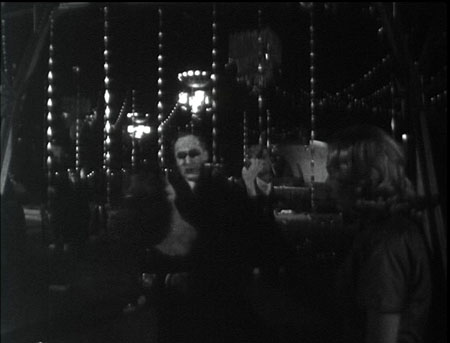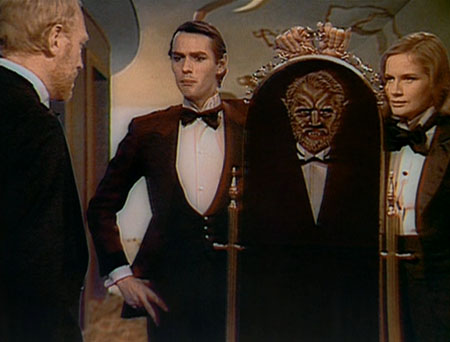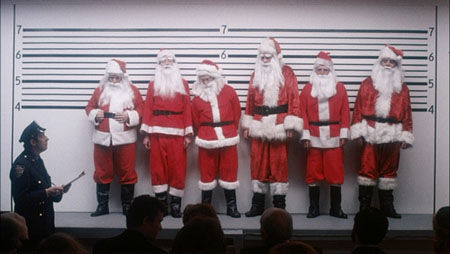NOTE: Elevator Movie has been promoted to the List of the 366 Best Weird Movies ever made. Commenting is closed on this review, which is left here for archival purposes. Please visit Elevator Movie‘s Certified Weird entry to comment on this film.
DIRECTED BY: Zeb Haradon
FEATURING: Zeb Haradon, Robin Ballard
PLOT: A socially maladjusted college student and a reformed slut turned Jesus freak are 
trapped in an elevator together–impossibly, for weeks on end.
WHY IT WON’T MAKE THE LIST: Quite possibly, Elevator Movie will make the overall list of 366 movies; I reserve the right to revisit it in the future. By mixing Sartre’s “No Exit” with an ultra-minimalist riff on Buñuel’s The Exterminating Angel, garnished with large dollops of sexual perversity, writer/director/star Zeb Haradon has created one of the weirder underground movies of recent years. Unfortunately, in a demanding two character piece that requires top-notch, nuanced dramatic performances to succeed, Haradon’s acting talent isn’t up to the level of his imagination and screenwriting ability. The resulting film looks like an “A-” film school final project: it tantalizingly promises more than it’s capable of delivering.
COMMENTS: Zeb Haradon is definitely a writer to keep an eye on. The script of Elevator Movie, though not perfect (it misses a few precious opportunities to ratchet the tension and drama up to stratospheric levels), is far and away the movie’s greatest asset. Haradon takes a very threadbare set of motifs (most notably, infantile Freudian sexuality) and pushes them as far as he can. This two-character, one setting drama could have been intolerably boring for the first few reels as it builds to its crashingly surreal climax, but Haradon manages to keep us interested by slowly revealing new facets of the characters and keeping up a reasonable tension as Jim and Lana struggle to reconcile their need for intimacy with their complete incompatibility and diametrically opposed agendas. This could have been a masterpiece, had the actors been able to carry off the monumental task the script sets up for them. Robin Ballard is passable in the easier role of Lana, but Haradon is almost unforgivably subdued as Jim. Jim is passive, so some of the wimpiness of the characterization is intentional, but when he needs to project a menacing, seething passion subdued under a calm exterior, he can’t pull it off. Therefore, at times the inherent dramatic conflict tails off into a bland “OK, OK”, just as Jim’s voice does when Lana once again rejects his advances.
The images in Elevator Movie, largely scatological and sexual but also involving some brief animal cruelty, are not for the meek. That said, some of these shocking images, and the surprising but perfect ending, can resonate a horrid fascination for a long time afterwards. That’s what makes Elevator Movie come so achingly near to being a great weird movie. Even with qualifications, it’s definitely worth a look for the Eraserhead set.
WHAT THE CRITICS SAY:




 (Director’s Cut)
(Director’s Cut)